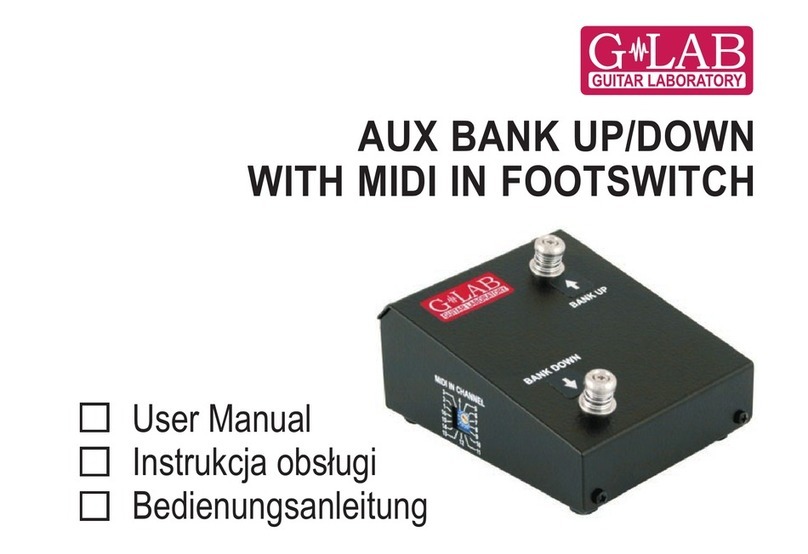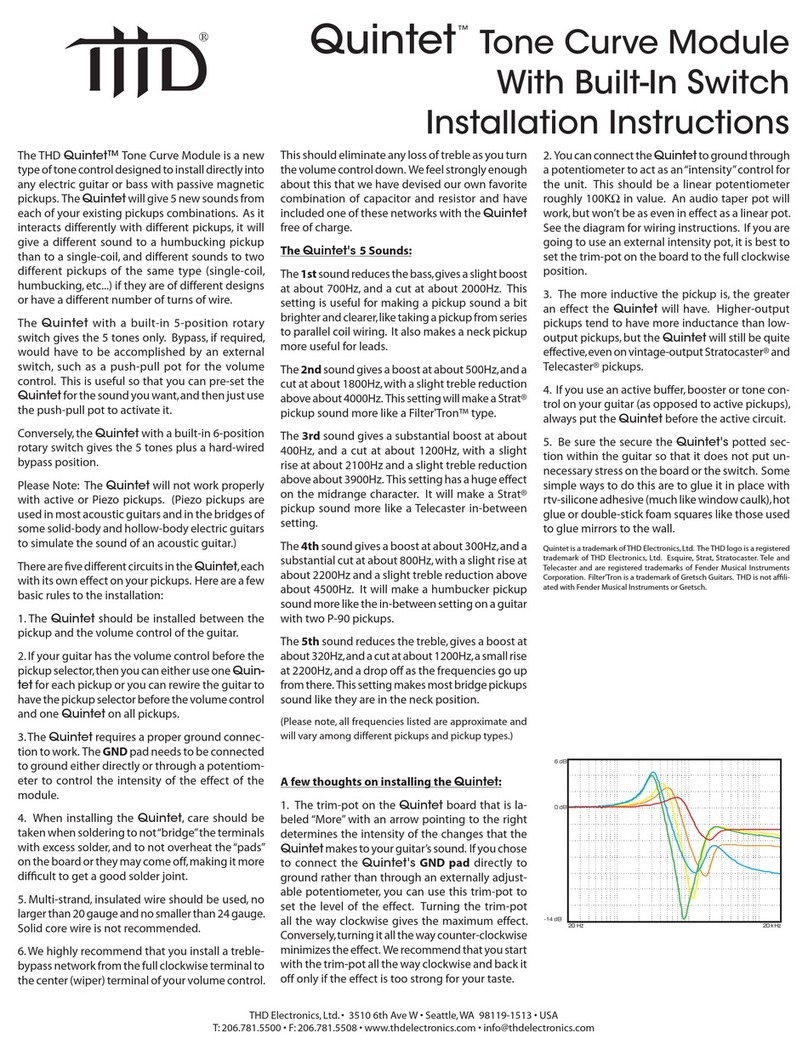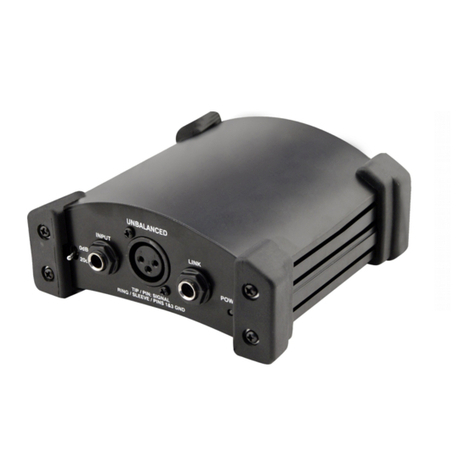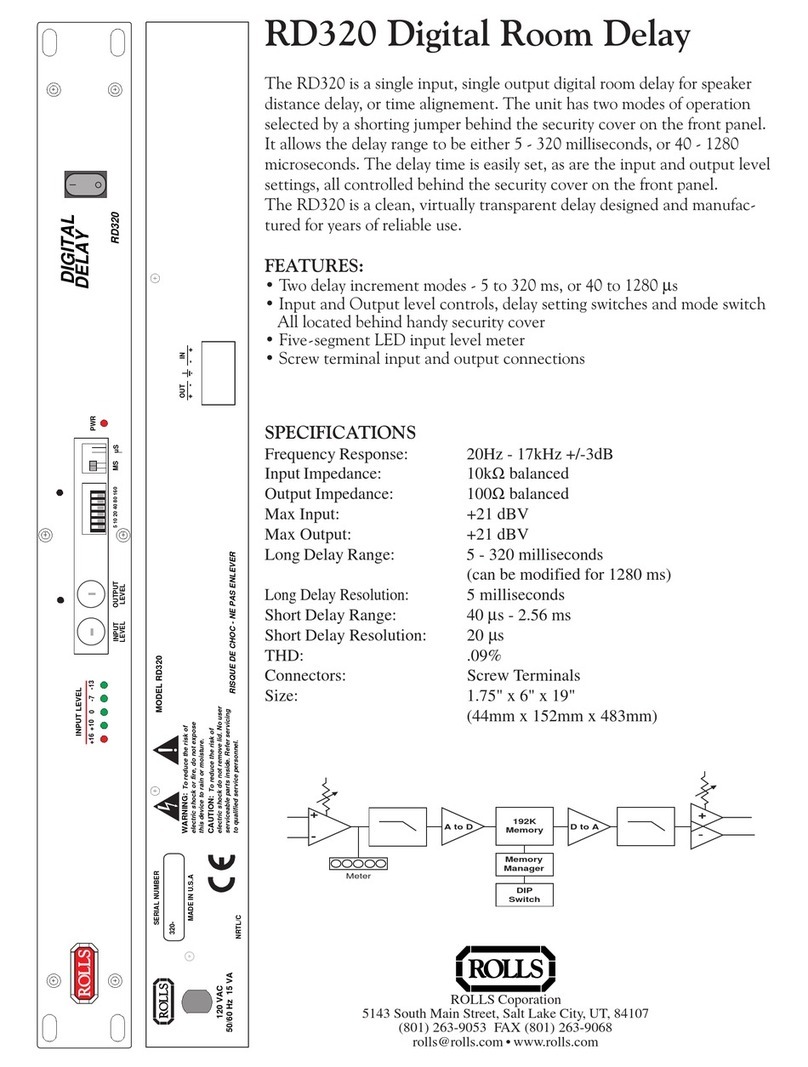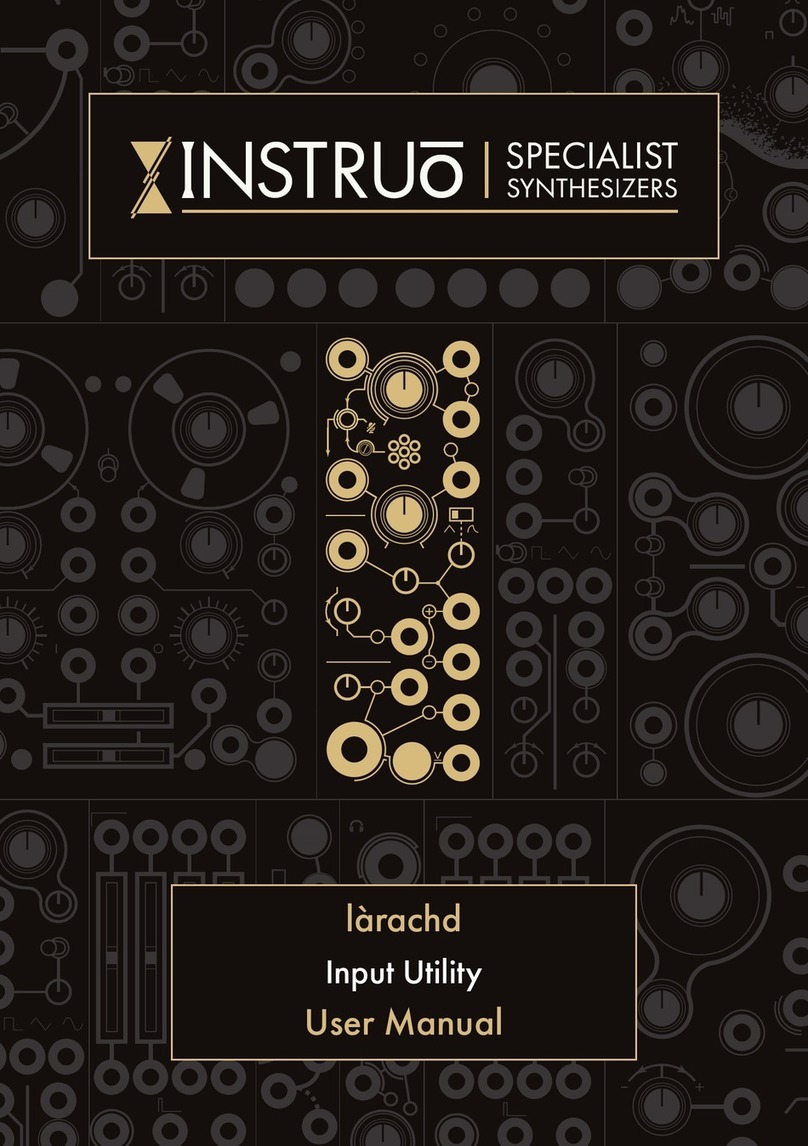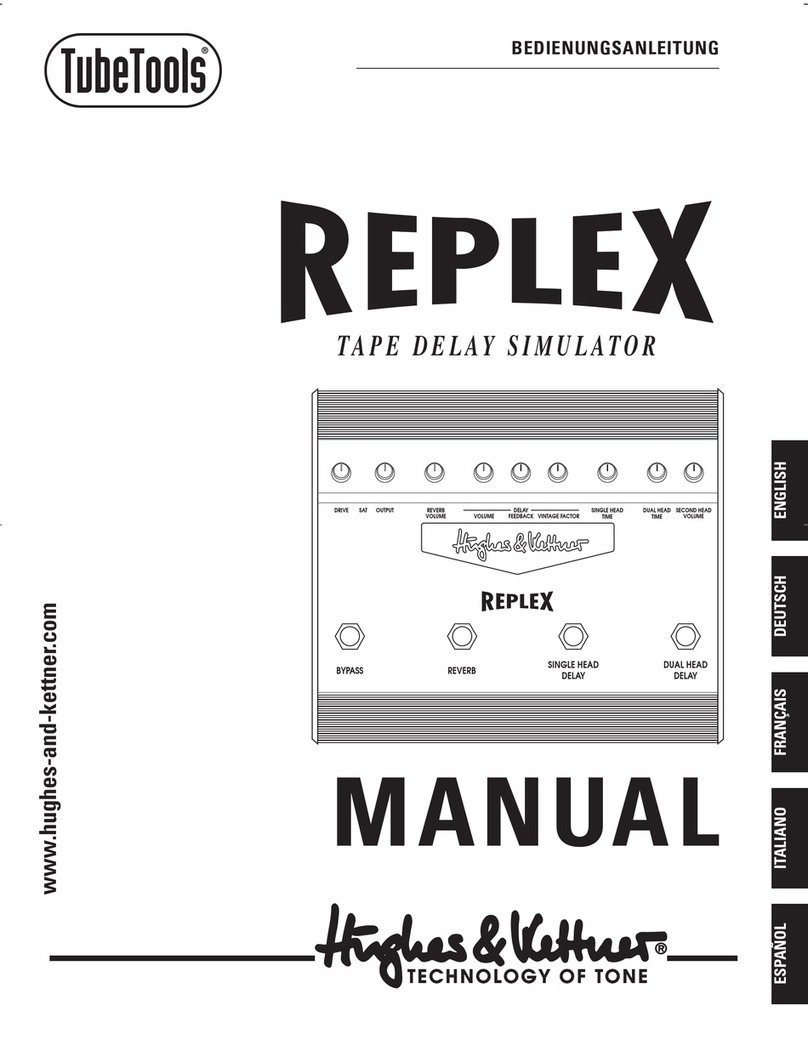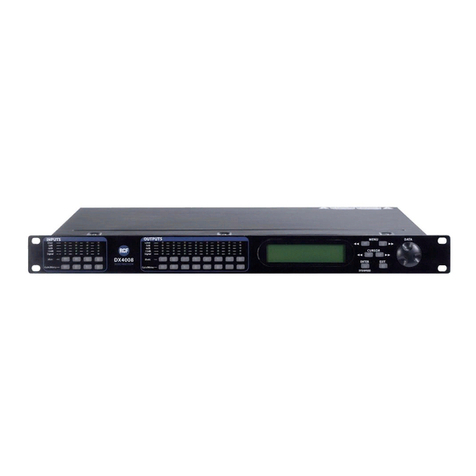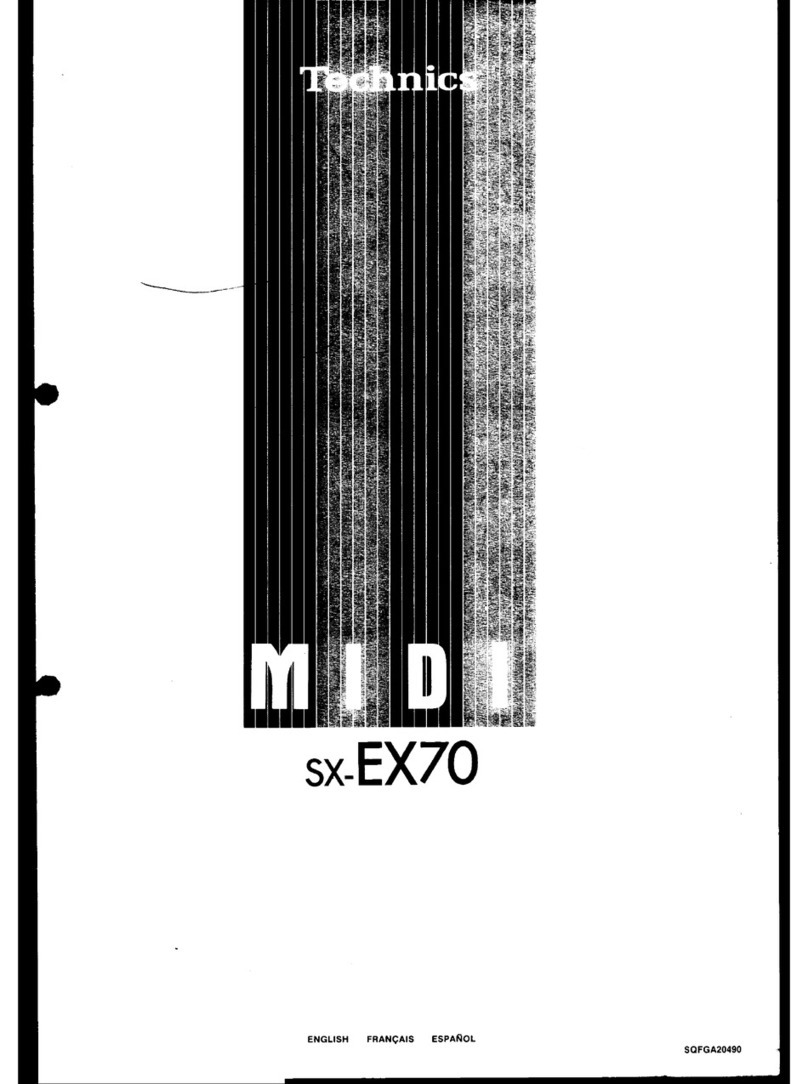Glab Smooth Delay SD-1 User manual



1
Version 2.2
Table of contents
Structure ___________________________________________________ 4
Power supply _______________________________________________ 8
Way of connecting ___________________________________________ 8
Setting INPUT GAIN and EFFECT LEVEL regulators ______________ 10
Tone parameters setting _____________________________________ 10
Effect switching off _________________________________________ 12
CTRL OUT output___________________________________________ 12
MIDI channel setting ________________________________________ 14
Controlling via MIDI commands _______________________________ 14
Technical parameters _______________________________________ 17
FCC Compliance____________________________________________ 18
Declaration of Conformity ____________________________________ 19

2

3
Dear Customer!
Thank you for choosing our product.
SMOOTH DELAY SD-1 is a classic delay effect with applied MAX ANALOG
technology. Its full signal path contains discrete components with exception of single
delay realized by 24 bits DSP processor. Its analog voice circuit with characteristics
accordant to the guitar tone enables to achieve natural sound of repeats with
adjustable attenuation of the high and low frequencies. Its SMOOTH function enables
to enlarge attenuation of the high and low frequencies for successive delay repeats.
That allows SD-1 to emulate the analog and tape delay effect.
Basic characteristics:
- Delay is set by TIME knob in two ranges (from 50 ms to 640 ms and from 100 ms
to 1280 ms) or is defined by TAP TEMPO footswitch
- Backlighted FEEDBACK and LEVEL foot knobs
- BASS and TREBLE (with FREQuencies range switch) knobs and SMOOTH switch
for repeats voicing
- Two switching off modes: HARD and SOFT
- KILL DRY function
- MIDI IN input and MIDI THRU output
- CTRL OUT output for controlling external devices

4
- INPUT GAIN signal level and EFFECT LEVEL regulators
- Clickless TRUE BYPASS
- 9V DC power supply
Structure

5
1 - Effect ON/OFF footswitch
2 - HARD/SOFT OFF mode switch
3 - TREBLE – high tones setting knob
4 - BASS - low tones setting knob
5 - FEEDBACK – repeats quantity setting foot knob
6 - SMOOTH L/H switch
7 - FREQ. L/H switch of TREBLE regulator functionality range
8 - PEAK indicator
9 - ACTIV – effect ON indicator
10 - TIME – delay time indicator
11 - RANGE L/H switch of delay TIME knob range
12 - LEVEL – effect volume foot knob
13 - TIME – delay time knob
14 - MODE 1/1 / ½ switch of TAP TAMPO switch functionality mode
15 - TAP TEMPO footswitch

6
16 - IN signal connector
17 - KILL DRY switch – dry signal OFF switch
18 - OUT signal connector
19 - CTRL OUT output to control DUAL REVERB
20 - MIDI IN input
21 - MIDI THRU output
22 - 9V power supply connector

7
23 - EFFECT LEVEL – regulator of delay maximal volume level
24 - GAIN INPUT– regulator of input sensitivity
25 - DS1 and DS2 switches
26 - MIDI channel setting switch

8
Power supply
The SD-1 should be supplied from external regulated 9V DC power supply, with
capacity of 100 mA or more. It is recommended to use separated source e.g. G LAB
PB -1 in order to avoid ground loop. Before connecting check if the connector’s
polarization is CTR – (center negative).
The device is protected against opposite polarity. If this protection switches on it is
needed to disconnect the power supply and wait few minutes before reactivation of the
device.
ATTENTION: Damages caused by improper power supply causes the loss of the
warranty.
Way of connecting
It is recommended to connect the SD-1 as the last but one stompbox (after SD-1
should be connected REVERB type effect).

9
If you use amp overdriven channel it is recommended to connect the SD-1 on the
amp effect loop. SD-1 can be connected to the serial or parallel loop.
Only in case of connecting the SD-1 to the parallel amp loop the KILL DRY and the
DS1 should be set to ON position. In other cases the KILL DRY switch and the DS1
should remain in OFF position. By reason of TRUE BYPASS it is recommended to
switch the effect ON/OFF by using the SD-1’s footswitch or MIDI commands. It enables
to use the delay SOFT OFF MODE.

10
Setting INPUT GAIN and EFFECT LEVEL regulators
INPUT GAIN and the EFFECT LEVEL regulators enable to match the SD-1 to
signal level. Setting is done by means of small, flat screw and should be carried out for
the maximal signal level (it is usually CLEAN tone) with activated delay effect (ACTIV
indicator lit). The INPUT GAIN should be set to maximal value on which doesn’t blink
the PEAK indicator. Maximal volume of the effect signal is set by the EFFECT LEVEL
regulator. It is recommended to set its dBu value similar to the INPUT GAIN regulator
dBu value. Additionally EFFECT LEVEL regulator enables to adjust LEVEL knob
functionality range to particular needs.
Tone parameters setting
Delay time
The time of delay is a basic parameter of the delay type effect. In the SD-1 the
delay can be set by using the TIME knob and the RANGE switch (for more precise
adjustment). Delay time is signalized by blinking TIME indicator.
The delay time can be also set by the TAP TEMPO footswitch. The TAP TEMPO
enables to adjust the time of repeats to the tempo of currently played song. The MODE
switch enables to enter the tempo of repeats in ratio 1/1 or 2/3 (1/3 and 1/2) to the time
intervals between successive footswitch pressings. It is possible to change the time
ratio on lower position of MODE switch for 1/3, 1/2 or 2/3.

11
In order to do that press and hold footswitch (or
footswitches) corresponding to the needed time
ratio and after change the position (in any direc-
tion) of the MODE switch.
The SD-1 defines the tempo on the base of two
last pressings. If the intervals between pressings
extend to more than 1,3 sec. in 1/1 mode, 3,9 sec in 1/3 mode, 2,6 sec. in 1/2 mode
and 1,9 sec. in 2/3 mode they are ignored.
Changing of the TIME knob position sets the tempo relevant to the current position of
the knob. Pressing and holding TAP TEMPO footswitch for more than one second sets
the tempo relevant to the current position of the TIME knob.
Effect volume and quantity of repeats
For setting the effect volume serves the LEVEL knob. Maximal effect volume
depends on settings of the EFFECT LEVEL regulator. To set the quantity of repeats
serves the FEEDBACK knob. Setting the FEEDBACK knob on 0 position creates the
single repeat effect. The FEEDBACK and LEVEL knobs can be turned by foot. So
basic parameters of the effect can be set by foot. Thanks to the backlighted knobs their
position is well visible even in darkness.
The BASS and TREBLE knobs serve to adjust the tone of repeats. In the extreme right
position (marked 0) the characteristics is flat. Regulators enable attenuation of the low

12
and high tones. The FREQ switch enables changing of the TREBLE knob frequencies
range. Switching to the L position move the TREBLE knob frequencies range to the
lower frequencies. It enables to get the tone of the effect similar to the typical tape and
analog delays. Additionally, the SMOOTH
switch set to H (HIGH) position enables to
enlarge the effect of high and low frequencies
attenuation for successive repeats. It causes
that the delays are heard as from apparently
bigger distance.
Below are shown settings of the SD-1 which
enable to obtain that effect.
Effect switching off
Switching off mode is defined by position of the OFF MODE switch. In HARD mode
the switching off is immediate with muting of repeats. In SOFT switching off mode the
repeats of previously played tones will resound to the end.
CTRL OUT output
CTRL OUT output enables to control the DUAL REVERB (G LAB DR-3/2, DR) via
MIDI commands or by using ON/OFF switch of the SD-1. In that purpose it is needed to

13
connect CTRL OUT connector with DUAL REVERB FOOT PEDAL input by using
JACK-JACK stereo cable (shielded cable is not required).
Thanks to that set of this effects constitute the reverberations center which can be
controlled by MIDI commands or by foot.

14
If the DS2 switch is in ON position every switching on of the effect causes setting in the
DUAL REVERB the B parameters and switching it off causes setting back the
A parameters. In case of MIDI control each of the effects is considered as an individual
MIDI device (on different channels) and can be fully switched ON/OFF by controller or
other MIDI device.
MIDI channel setting
To set a MIDI channel on which the SD-1 receives the commands serves MIDI
CHANNEL rotatable switch. To change the channel use a small screw and turn it a little
right or left. The arrow-head indicates set channel (A, B, C, D, E, F letters correspond
with 10, 11, 12, 13, 14, 15 channels numbers and “0” digit indicates channel No. 16).
For CTRL OUT output the channel on which are received the commands is higher by
one than this set by MIDI CHANNEL switch (for channel No. 16 it is channel No. 1).
Controlling via MIDI commands
SD-1 can be controlled by Program Change and/or Control Change commands.
The table below shows functionality of the Program Change commands.

15
Prog Change
Number Functionality
1 Switch off the effect (the mode is defined by
OFF MODE switch position)
2 Switch off the effect in HARD mode
3 Switch off the effect in SOFT mode
4 Switch on the effect
5 to 128 Switch on the effect with delay time Pr.Ch. x 10 ms
The table below shows functionality of the Control Change commands.
Control Change
Number Control Change Value
102 0-63 switch off the effect (the mode is defined by
OFF MODE switch position)
64-127 switch on the effect
103 4–127 delay time = Value x 10 ms +10 ms
80 (0 and 127 alternately) TAP TEMPO function

16
The table below shows functionality of the CTRL OUT output’s Program Change
commands (to control DUAL REVERB effects).
Prog Change
Number DR-3, DR-2 DR
1 REVERB ON, SET A SET A
2 REVERB ON, SET B SET B
3 REVERB OFF, SET A SET A
4 REVERB OFF, SET B SET B

17
Technical parameters
Dimensions: depth 120 mm
width 145 mm
heigh 65 mm
Weight 0,65 kg
Input impedance 1Mohm
Input signal range (with 5 dB room
for effect signal)
-2 dBu (1,7Vpp)
up to 10 dBu (7Vpp)
Maximal output signal (@ the load
of 20 kOhm and more)
14,7 dBu (12Vpp)
Power supply 9V DC regulated (8,7V - 9,4V)
Current consumption 100 mA

18
FCC Compliance
This device complies with Part 15 of the FCC Rules. Operation is subject to the
following two conditions: (1) this device may not cause harmful interference, and (2)
this device must accept any interference received, including interference that may
cause undesired operation.
NOTE: This equipment has been tested and found to comply with the limits for a Class
B digital device, pursuant to Part 15 of the FCC Rules. These limits are designed to
provide reasonable protection against harmful interference in a residential installation.
This equipment generates, uses and can radiate radio frequency energy and, if not
installed and used in accordance with the instructions, may cause harmful interference
to radio communications. However, there is no guarantee that interference will not
occur in a particular installation.
If this equipment does cause harmful interference to radio or television reception, which
can be determined by turning the equipment off and on, the user is encouraged to try to
correct the interference by one or more of the following measures:
– Reorient or relocate the receiving antenna.
– Increase the separation between the equipment and receiver.
– Connect the equipment into an outlet on a circuit different from that to which the
receiver is connected.
– Consult the dealer for help.
Table of contents
Other Glab Music Equipment manuals
Popular Music Equipment manuals by other brands
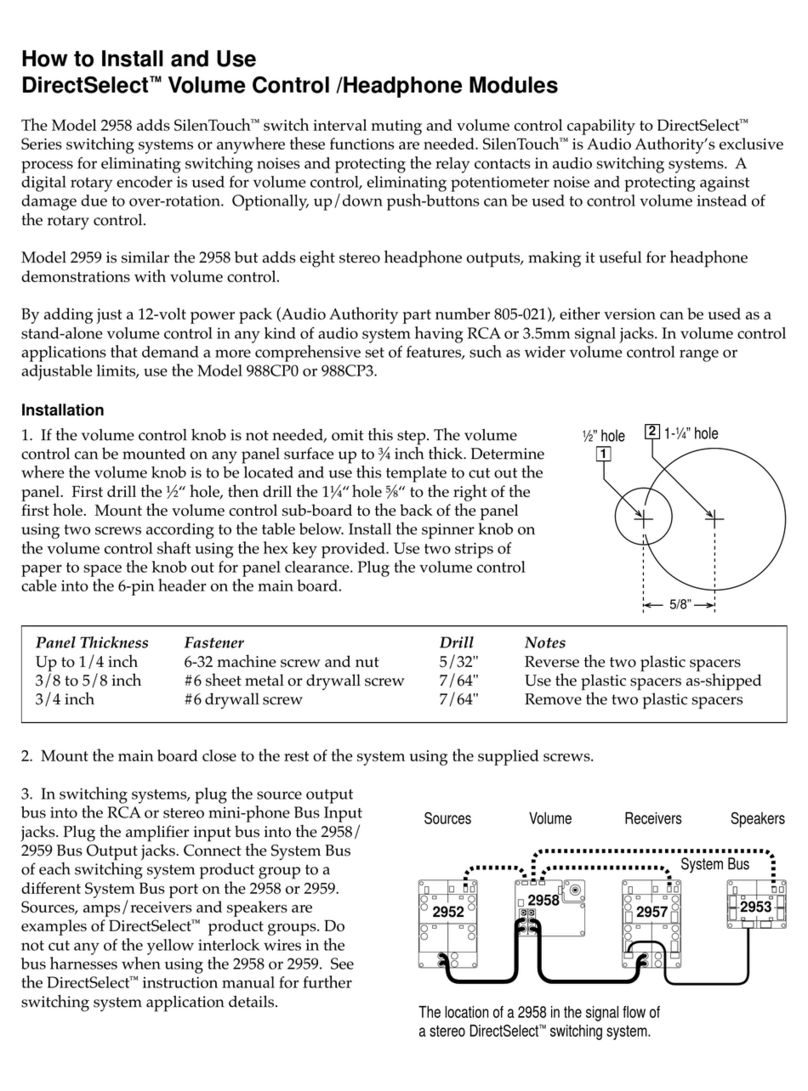
Audio Authority
Audio Authority DirectSelect How to install and use

Shure
Shure M71C datasheet

TerraTec
TerraTec phonoPreAmp studio USB manual

Destination Audio
Destination Audio SP8-50 Installation & operation manual
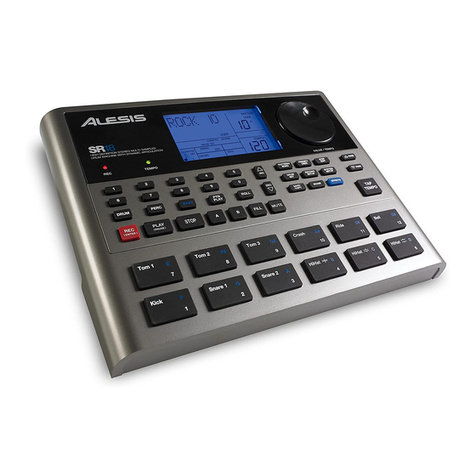
Alesis
Alesis SR-18 Service manual
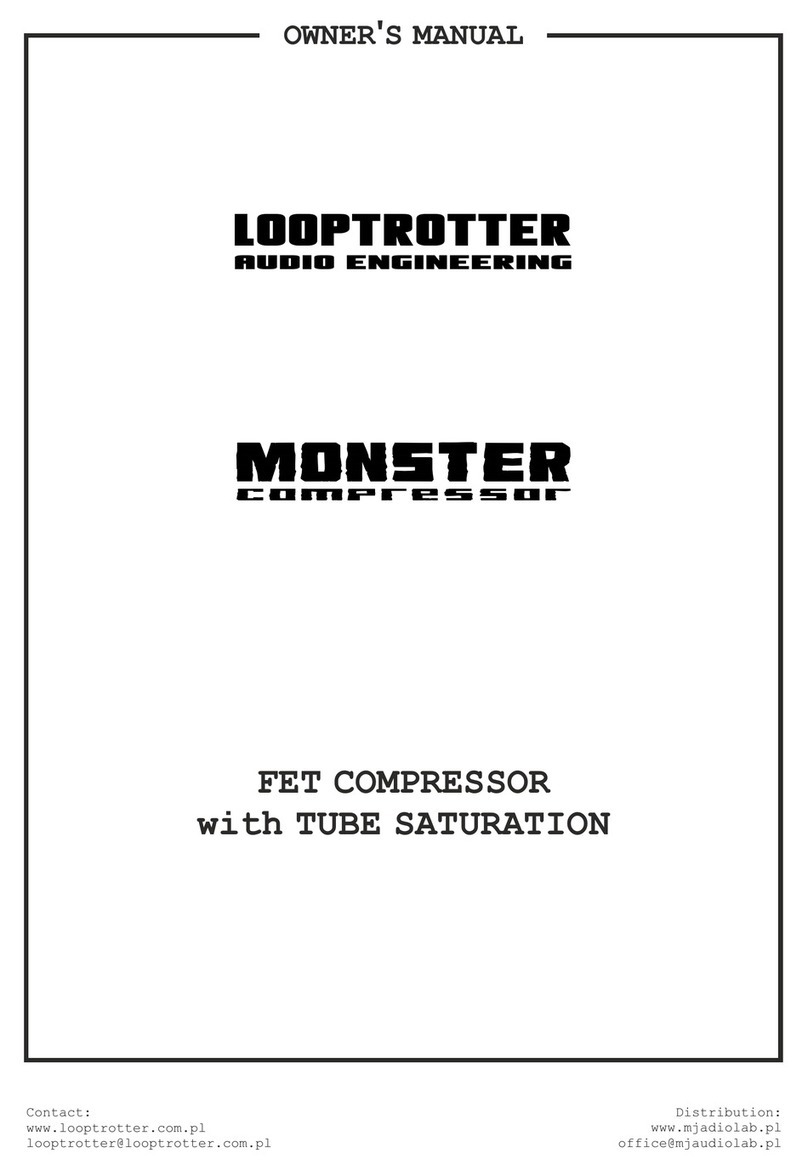
LOOPTROTTER
LOOPTROTTER Monster compressor owner's manual

